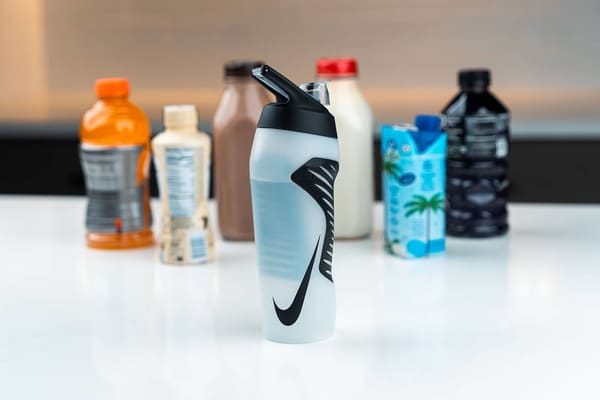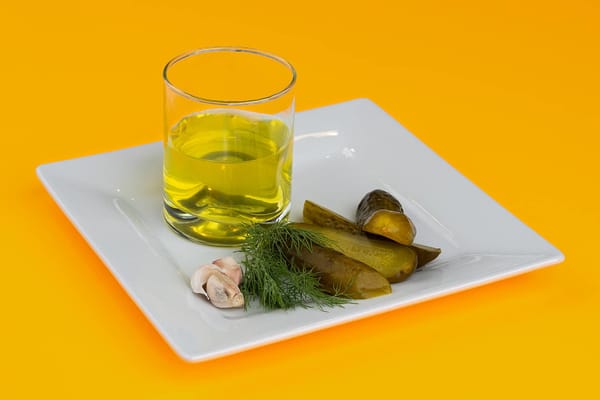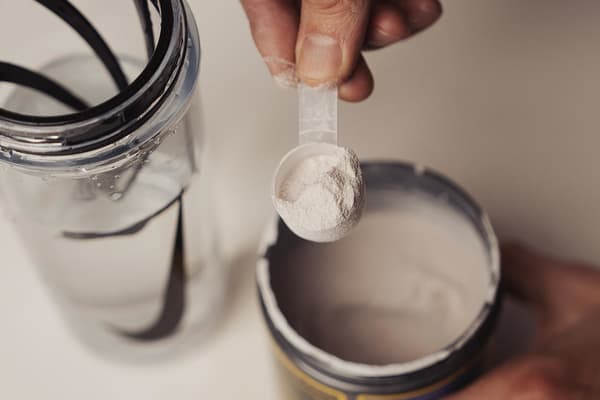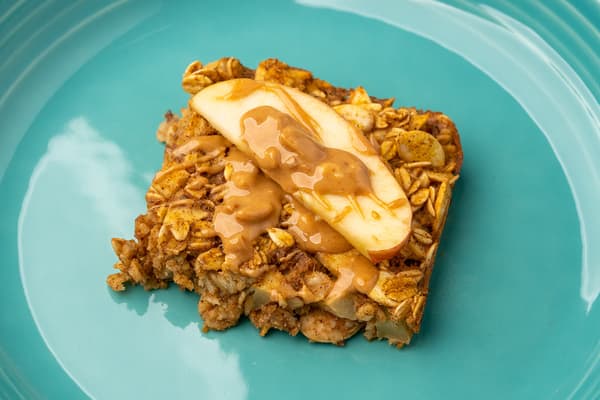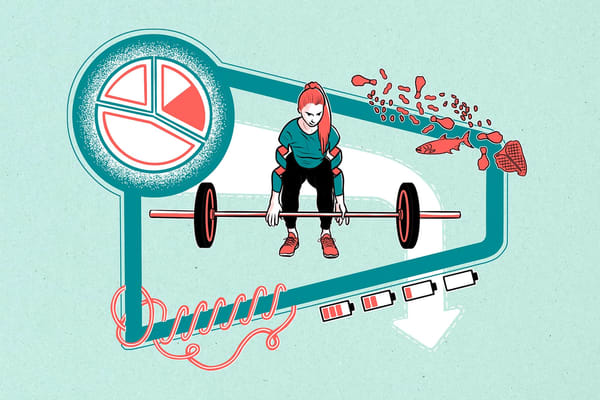Will Drinking Salt Water Hydrate You More Effectively Than Regular Water?
Nutrition
We're not saying you should guzzle ocean water — in fact, please don't — but registered dietitians specialized in sports nutrition suggest a bit of salt may satisfy post-workout electrolyte needs.
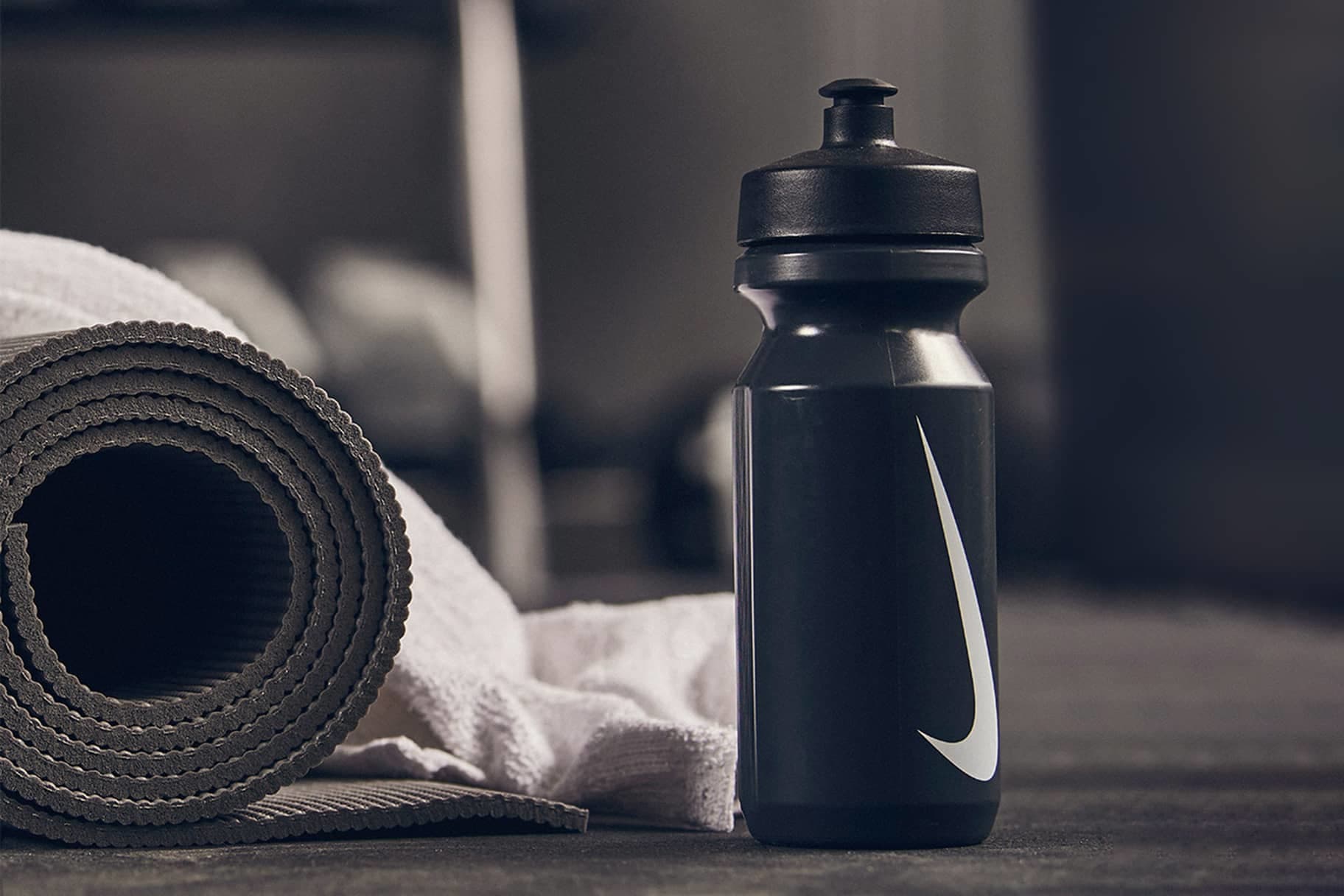
When it comes to better athletic performance and recovery, deploying a breadth of strategies is important, but one in particular tends to top the list: hydration.
While that means drinking enough water, it also calls for keeping your electrolytes in the right balance and the main electrolyte you need is sodium — in large part because so much of it is lost through sweat, especially in warmer temperatures. Does simply adding salt do the trick to replenish electrolytes? The short answer is yes, but there are some considerations to keep in mind.
Why Do You Need Sodium?
During exercise, hydrating with water only can dilute the body's sodium levels, according to Natalie Allen, R.D., clinical assistant professor of biomedical sciences at Missouri State University, with expertise in sports dietetics. That's a problem, because sodium helps the body maintain fluid balance by ensuring that the right amount of fluid is going in and out of cells.
"An athlete should have this balance between sodium and water to prevent muscle cramps, or even more of a concern, a condition called hyponatremia," she says. "That occurs when the body's levels of sodium drop too low."
If that happens, your cells begin to swell and could cause issues such as headache, sudden fatigue, muscle weakness or nausea. If the situation becomes more serious, it could lead to seizures and even a coma.
Unfortunately, it's not as rare as you might think. One study called hyponatremia "seriously underestimated," and another study both found that the condition is the most common electrolyte abnormality and is widely seen in hospitalized patients.
"Because of this, it's important to get adequate sodium in the diet and to drink a small amount of sodium in your beverage when exercising, especially in hot conditions or for long periods of time," says Allen. "That's why most sports drinks contain an appropriate amount of sodium, to help prevent blood dilution."
Preventing muscle cramps is far from the only function of sodium, adds dietitian and strength and conditioning trainer Reda Elmardi, R.D., C.S.C.S. He says the mineral is also key for these benefits, especially for athletes:
- Blood pressure regulation. When your blood pressure rises, your heart has to work harder to pump blood through your arteries, leading to fatigue and dizziness. By maintaining proper levels of sodium in your diet, you can help prevent these symptoms from occurring.
- Better muscle function. Muscle contraction requires energy that comes from ATP (adenosine triphosphate, an important molecule that helps store and transfer energy to cells in the body. ATP production relies on oxygen and glucose, both of which require sodium ions to function properly.
- Improved digestion. For streamlined digestion, you need enzymes in your saliva that break down food. These enzymes need sodium to operate effectively.
- Helps nerves transmit messages. Nerves use sodium to conduct electrical impulses throughout your body. Without enough sodium, nerve signals may not travel efficiently which could negatively affect certain processes, such as perception of pain.
- Optimizes brain function. Your brain uses sodium to produce chemicals that control your moods, thoughts, and actions.
How Much Salt Should You Add to Water Post-Workout?
If you're generous with salt in your water, you'll likely notice the taste is less than ideal, says dietitian Ashley Harpst, R.D., sport specialist at Go for the Gold Nutrition. Fortunately, it doesn't take a cup of ocean water to keep you going strong, but it may require some experimentation with how much works best for you.
Here are a few factors Harpst suggests to keep in mind before using salt water to hydrate:
- Intensity and duration of activity, as well as the weather: You're thinking of replenishment of sodium that's lost, so that will depend on how much you're sweating. For example, if it’s humid, Harpst suggests drinking water with salt more often, rather guzzling more at each session. That might mean drinking about four to six ounces of a sports drink or water-plus-salt mix every 20 minutes.
- Sodium in your diet: Keep in mind that salt is obviously not the only source of getting enough sodium in your body. You can also increase levels with your pre-workout meals and snacks, says Harpst, especially options like pretzels and saltine crackers. Of course, there’s such a thing as getting too much salt, especially when you don’t hydrate enough. That can lead to a temporary rise in blood pressure and excess thirst, so if you’re experiencing those issues, drink more water to get back in balance, Harpst says.
- Whether you're a "salty sweater" or not: Some people release more sodium when they sweat than others. Harpst says if you tend to have white residue on your skin or streaks on your clothing after working out, you're likely to be shedding more sodium when you sweat, which means you’ll need to replenish that sodium through what you eat and drink.
- Signs of low sodium: One way to know if you need to increase your sodium level is whether you're experiencing muscle cramps during and after your workout, Harpst says. That can be a telltale sign of electrolyte imbalance.
In terms of how much to add, a small packet of salt that can be found in restaurants is generally a good amount to throw into an 8-ounce bottle of water or sports drink as a way to prevent muscle cramps, Allen says. That usually represents about 100 milligrams of sodium. Remember, table salt (also referred to as sodium chloride) is usually about 40 percent sodium and 60 percent chloride. Allen tells athletes at Missouri State to keep a few packets like that in their gym bags because it works quickly to resolve cramps and weakness. Ideally, you’ll want to replace other electrolytes as well, such as potassium, magnesium, and calcium, and sports drinks can help to round out what you need, she adds.
RELATED: 7 Muscle Groups You Activate When Running
"Using sports drinks can be particularly helpful," says Allen. "The carbohydrates in those drinks can help pull the sodium into your cells, forcing a quicker rehydration."
Does the Type of Salt Matter?
If you've been in the baking aisle at any store recently, you've likely seen that the range of salt varieties is quite vast — and specialty or health food stores tend to offer even more. For example, there's sea salt, iodized table salt, Himalayan pink salt, Celtic gray salt, even black lava salt from Iceland with activated charcoal.
Research on whether one of these is far superior to the others is lacking, according to Allen. Also, differences tend to be negligible. For example, most salt contains about 98 percent sodium chloride, and the other two percent may be trace minerals like potassium, magnesium, and calcium, he says.
That doesn't mean you're getting a huge boost from those minerals, because you'd be consuming them in a very small amount, she adds. That's why everyday table salt works just as well as a more high-end salt that's likely more expensive, says Allen.
What Are Some Other Ways You Can Drink Sodium After a Workout?
If adding even a small amount of salt into your water or sports drink makes you dread even a few sips — let's face it, you can have the most perfectly balanced drink ever developed, but it's not going to help if you don't drink it — there are other ways to get sodium without as much salt, says Harpst.
For example, using coconut water can be helpful, since it has both sodium and potassium. That aids with muscle contraction and fluid retention, and you can hide the salty taste by adding a small amount of pineapple juice, Harpst suggests. There are also commercially available electrolyte powders designed to be mixed with water for rehydration, and not only do these contain sodium, they also tend to be flavored.
Like so much with any kind of athletic training and fitness, it’s helpful to play around with different options and pay attention to how they affect your performance. And maybe next time you get takeout, consider stashing a few of those salt packets in your gym bag.
For more helpful tips relating to nutrition and your workout, be sure to download the Nike Training Club App!
Story written by Elizabeth Millard

